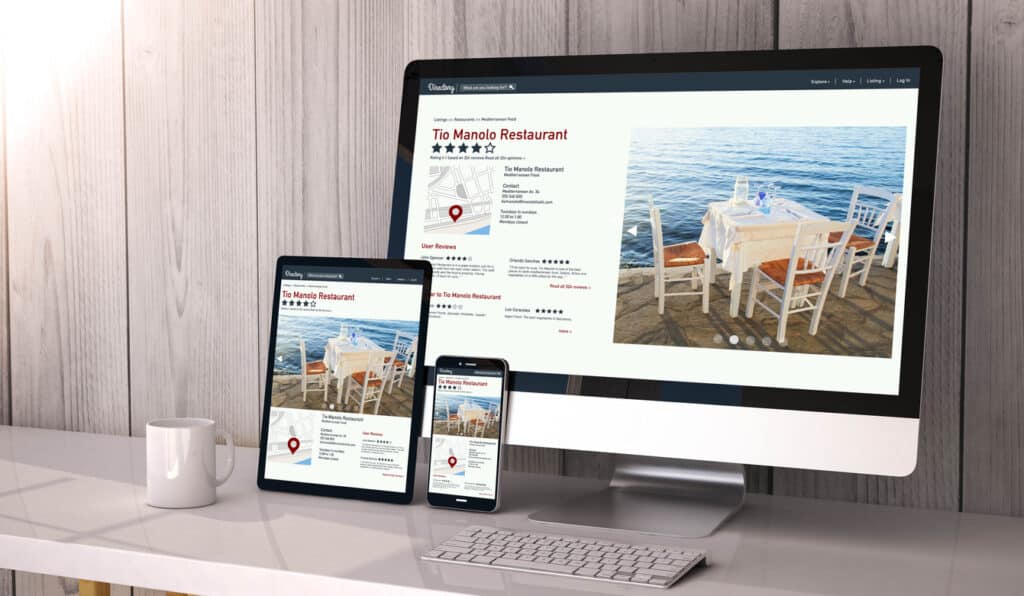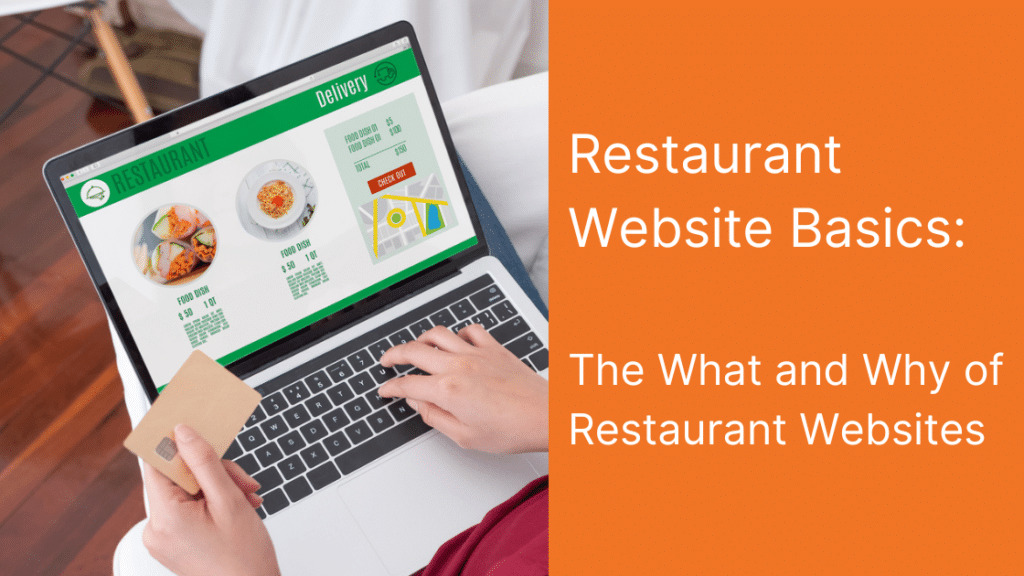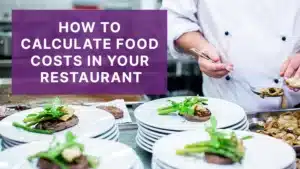Websites are a valuable tool in any business, but it can be the springboard to success for a restaurant. If a restaurant has a great restaurant website, you can attract more customers, build partnerships with vendors, and hire those looking for specific work, all at little to no cost to the business.
Some restaurants, especially smaller ones or start-ups, have opted for an online presence that lives within the environment of an ordering or delivery system instead of building a branded website of their own. While this may work in the short-term, this strategy definitely has its drawbacks. Not only does it make it harder for potential customers to learn about the restaurant brand, it eliminates several of the most important functions of a restaurant website, like hiring and search visibility.
In the grand scheme of things, building and maintaining restaurant websites is relatively inexpensive, and provides a huge return on the investment. So before deciding to forego building your restaurant website in order to save a little money, you may want to read through this article and consider what you might be missing.
Why You Need a Restaurant Website: The Benefits and Advantages
Let’s dive into how a well-designed website can give a competitive edge to any restaurant business
Increased Visibility and Reach
At the least, having a website gives your business visibility beyond its physical location. It creates the opportunity to reach potential customers in a wider geographic area. Imagine only ever having customers that drive by your location. Depending on the traffic flow of your location, signage, and curb appeal, physical presence as your only tactic to attract patrons is setting your business up for failure.
When set up correctly, your website will be found through various organic mediums and even fuel word of mouth from previous patrons. There is high potential to be seen through online searches, local directories, and social media platforms, thus attracting new customers who may not have otherwise discovered your establishment. The increased visibility helps you tap into new markets and attract a diverse customer base.
Building Trust and Credibility
A professional and well-maintained website builds trust and credibility among potential customers. It signals that your establishment is a place of high quality for those who want to experience a dining experience, potential employees, and even vendors considering partnering with your business. A visually appealing design, user-friendly interface, and relevant content create a positive impression of your restaurant’s professionalism and attention to detail. Testimonials, reviews, and social proof from satisfied customers displayed on your website reinforce the credibility of your establishment and encourage new customers to dine confidently.
Marketing and Promotion
Back in the 1990’s Bill Gates stated: “If your business is not on the Internet, then your business will be out of business”. Even though this quote is over 30 years old, it rings true now more than ever. Consider that your website is the home base for your marketing and promotional efforts. Everything leads back to your website and social media handles. By integrating your website with social media platforms, email marketing campaigns, and online advertising, you can leverage the power of digital marketing to reach a larger audience.
Ruminate on what keywords are the pillars of your restaurant. What are people looking for that you offer? For example, if your website shows for someone searching ‘happy hour appetizers’, ‘Italian restaurant’ or ‘family-friendly tavern’ you will gain more exposure and hopefully more customers by way of search engine optimization (SEO) you can help your business show for related search terms and ultimately give your website more web traffic.
Promoting special events, discounts, or new menu items through your website helps generate buzz and attract customers and retain loyal ones. Features like newsletter subscriptions or loyalty programs on your website enable you to nurture customer relationships, drive repeat business, and fuel word of mouth for the ultimate revenue pipeline.
Improved Customer Convenience
A website offers convenience to your customers by providing essential information about your restaurant. Displaying your address, phone number, hours of operation, and directions helps potential customers easily find and contact you. This is especially helpful if your goal is to expand and grow to have many locations.
Additionally, integrating online reservation and ordering systems streamlines the customer experience, allowing them to book a table or place an order at their convenience, without needing phone calls or in-person visits. This convenience enhances customer satisfaction and encourages repeat visits. It also can share data with your business about customer trends and inform future marketing campaigns.
Showcasing Your Menu and Specialties
Your website is an excellent platform to showcase your menu and highlight your culinary specialties. Including detailed descriptions, enticing food photography, and information about ingredients or sourcing can help create a mouthwatering experience for visitors. You can also use your website to feature seasonal or limited-time offerings, daily specials, or promotions, enticing customers to try new dishes and explore your culinary creations. When building your online menu, use these six tips to make sure it has the best potential to work for your business:
- Readability. Perhaps the most important aspect of your menu should be an easy-to-read font and text size.
- Allure. Have the descriptions and visuals be the vehicle to make your food appealing.
- Variety. This conveys your restaurant’s different types of cuisine offered
- Accommodations. Do you have the ability to accommodate food allergies or dietary preferences? (examples: Gluten free, vegan, etc)
- Branding. The way you describe your menu items directly relates to your overall brand.
- Organization. Keep everything in easy-to-read sections and grouped together.
Competitive Advantage
In today’s digital landscape, having a website is essential to remain competitive in the restaurant industry. Many customers rely on online research and reviews to make dining decisions, and a lack of online presence can put your restaurant at a disadvantage. With a well-designed website, you can showcase your unique offerings, differentiate yourself from competitors, and stay relevant in customers’ minds.
Valuable Insights and Analytics
A website with analytical data features provides valuable insights into customer behavior, preferences, and demographics. By analyzing website traffic, page views, conversion rates, and other metrics, you can better understand your customer base and tailor your marketing strategies accordingly. This data-driven approach helps you make informed decisions, optimize your website’s performance, and improve the customer experience.

What You Need on Your Restaurant Website
In today’s digital age, a well-designed and informative restaurant website is crucial for attracting and engaging customers. Your website serves as the digital face of your restaurant, providing a platform to showcase your offerings, establish your brand identity, and enhance the overall customer experience.
Here are some of the things that are absolutely vital to include on your restaurant website:
Branding and Professionalism
A professionally designed website creates a positive first impression and establishes your restaurant’s credibility. It allows you to showcase your unique brand identity, such as your logo, color scheme, and overall design aesthetic. A visually appealing and cohesive website enhances your restaurant’s professionalism and helps build trust with your target audience.
In addition, the website provides a platform for you to really explain who you are as a business. Including your story, your values, and your goals will provide a way for customers to really connect with your business and become raving fans. In addition, sharing this information might be a big reason why potential employees may choose to apply to work for you.
Essential Information at a Glance
Your website should provide key information that customers commonly seek, such as your restaurant’s address, phone number, and operating hours. Including this information prominently on your site ensures that potential customers can easily find and contact you. Clear and concise information helps eliminate confusion and encourages customers to visit or place an order.
Social Media Integration
Integrating social media links on your website enables visitors to connect with your restaurant on various social platforms. This integration fosters engagement, allows customers to share their experiences, and helps you build a loyal online community. Social media links also provide opportunities for customers to leave reviews, which can influence others’ dining decisions.
Menu Presentation
Your website should feature an up-to-date menu, showcasing your culinary offerings and enticing visitors to dine with you. Provide detailed descriptions, attractive food photography, and pricing information to give potential customers a taste of what they can expect. This helps to generate interest, set expectations, and encourages customers to visit or place online orders.
Online Ordering Capability
Offering online ordering directly through your website streamlines the ordering process for customers and increases convenience. Incorporating a user-friendly online ordering system enables customers to browse your menu, customize their orders, and securely complete transactions. This feature enhances customer satisfaction and encourages repeat business.
Excellent Photography
High-quality and visually appealing food photography on your website can be a powerful marketing tool. Captivating images of your dishes can entice customers, evoke cravings, and convey the quality of your culinary offerings. Invest in professional food photography to create a visually appealing and enticing experience for your website visitors.
Potential Add-ons
Depending on your restaurant’s needs and goals, there are additional add-ons or features that you can consider integrating into your website. Some examples include:
Reservation System Integration
If you offer reservations, integrating a reservation system into your website allows customers to conveniently book a table online.
Online Reviews and Testimonials
Displaying customer reviews and testimonials on your website can build trust and credibility. Consider integrating platforms like Yelp or TripAdvisor to showcase positive feedback from satisfied customers.
Newsletter Sign-Up
Provide a newsletter sign-up option on your website to collect email addresses and build a customer database. This allows you to communicate directly with interested customers, share updates, and promote special offers or events.
Loyalty Programs
Implementing a loyalty program on your website can help you foster customer loyalty and encourage repeat visits. Loyalty programs reward customers for their continued patronage, incentivizing them to choose your restaurant over competitors. Your website can feature a dedicated section where customers can sign up for the loyalty program, track their points or rewards, and receive exclusive offers or discounts.
By offering incentives such as free meals, birthday rewards, or personalized offers, you can create a sense of appreciation and build stronger relationships with your loyal customers.
Gift Cards and Merchandise
Offering gift cards or merchandise through your website provides an additional revenue stream and expands your restaurant’s brand presence. Customers can purchase gift cards directly from your website, either for themselves or as gifts for friends and family. This allows recipients to enjoy a dining experience at your restaurant, increasing foot traffic and potential new customers.
Additionally, if your restaurant has branded merchandise such as T-shirts, hats, or mugs, you can showcase and sell them on your website. This not only promotes your brand but also provides an opportunity for customers to show their support and loyalty by purchasing and using your merchandise.
By ensuring your restaurant website includes essential information, integrates social media, showcases your menu, offers online ordering, features excellent photography, and potentially incorporates add-ons, you can create a powerful online presence that engages customers and drives business growth.
Learn More About Restaurant Websites and Restaurant Technology
- Restaurant Websites and Online Ordering Systems
- Restaurant Point of Sale Systems
- Restaurant Reservation and Table Management Systems
- Restaurant Food Delivery Services





